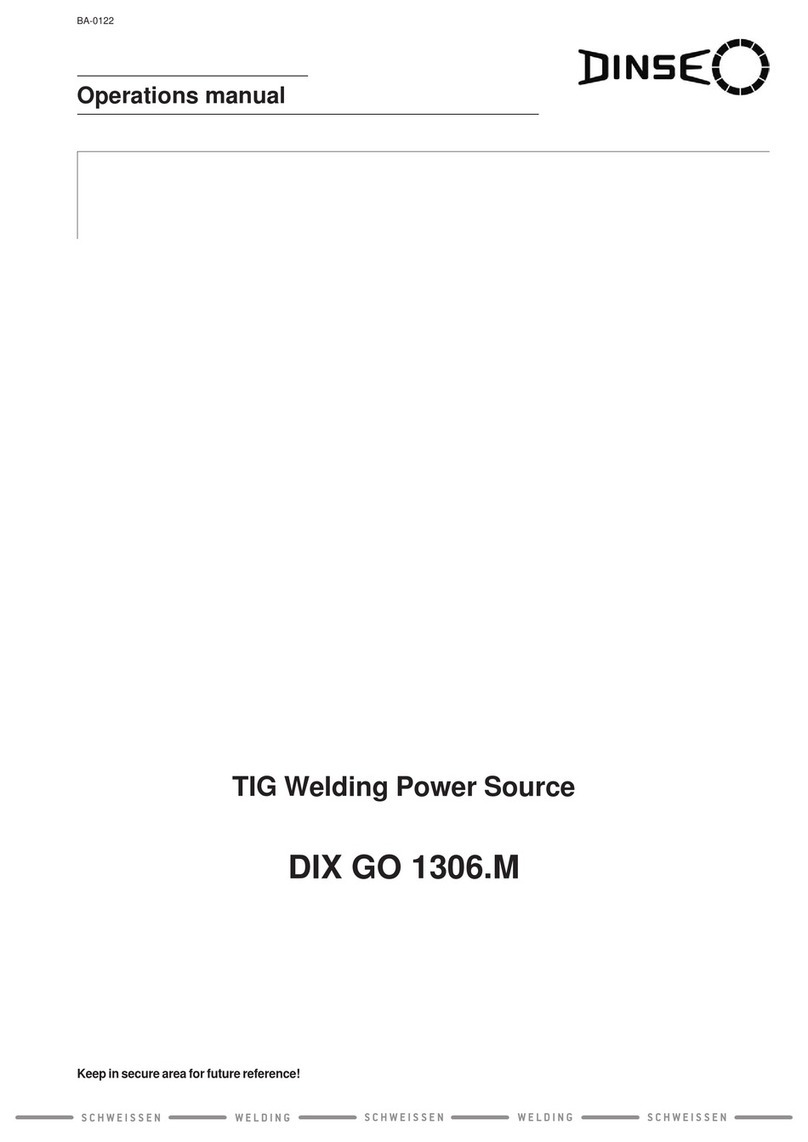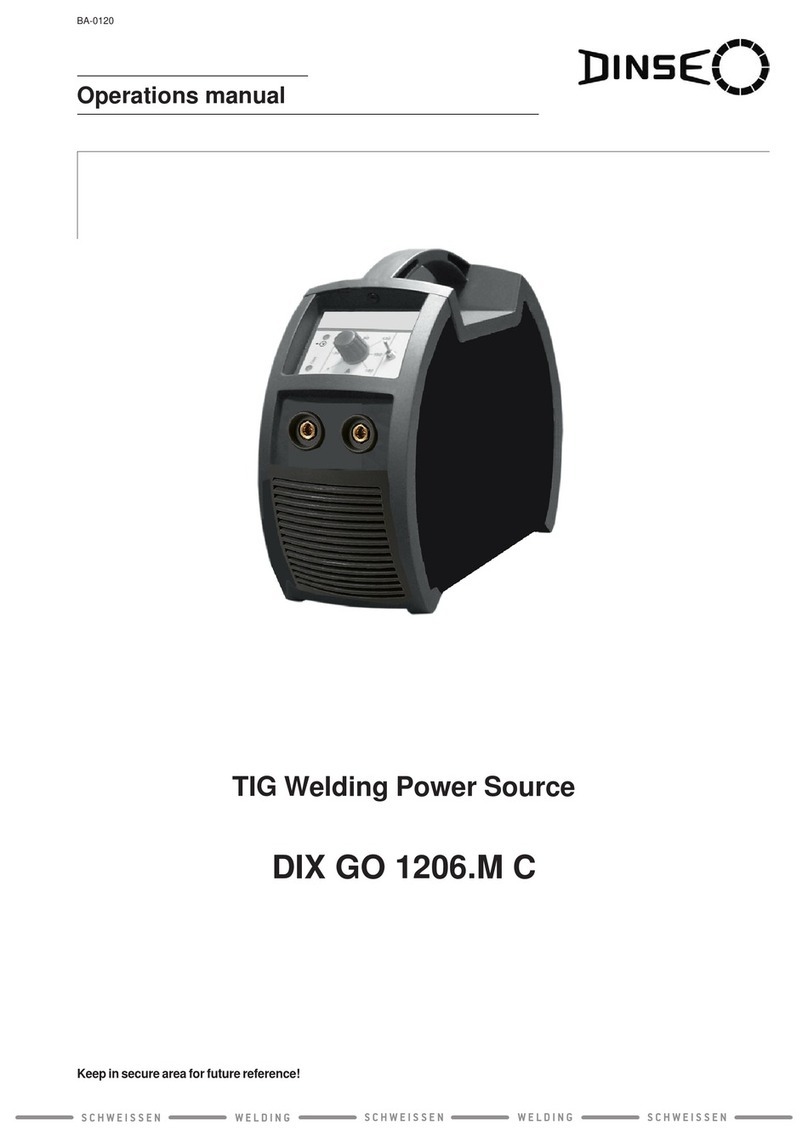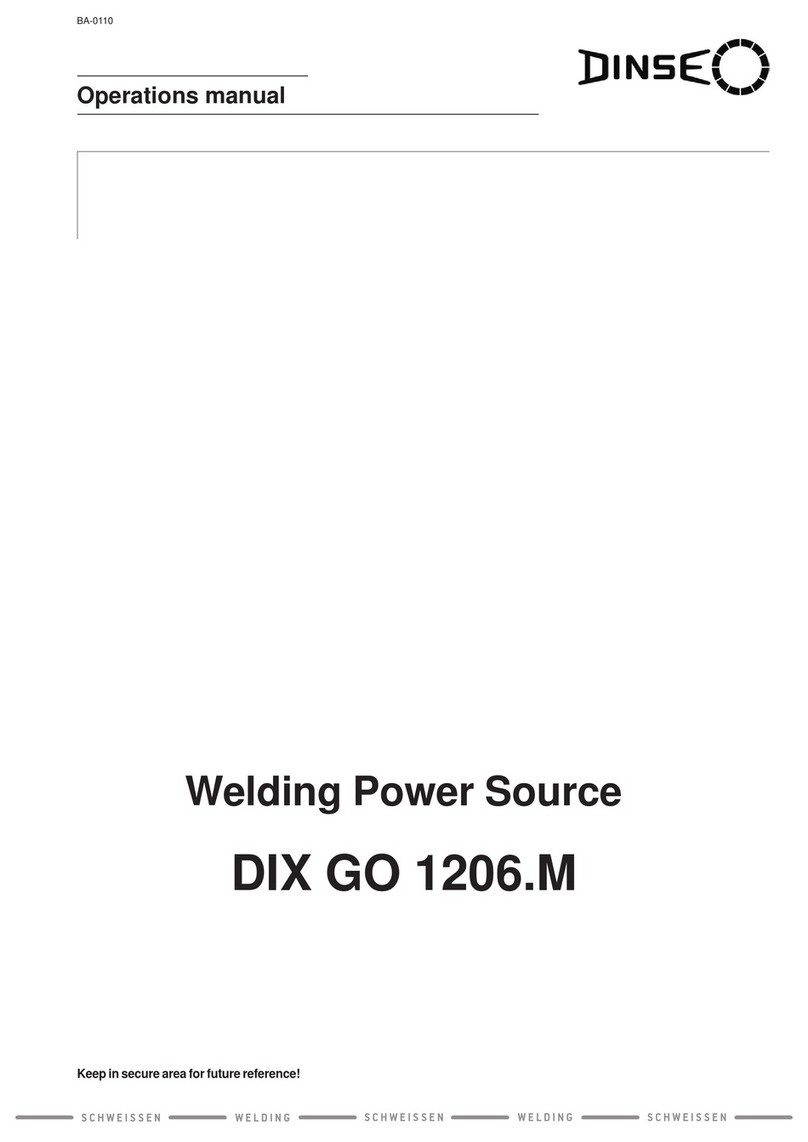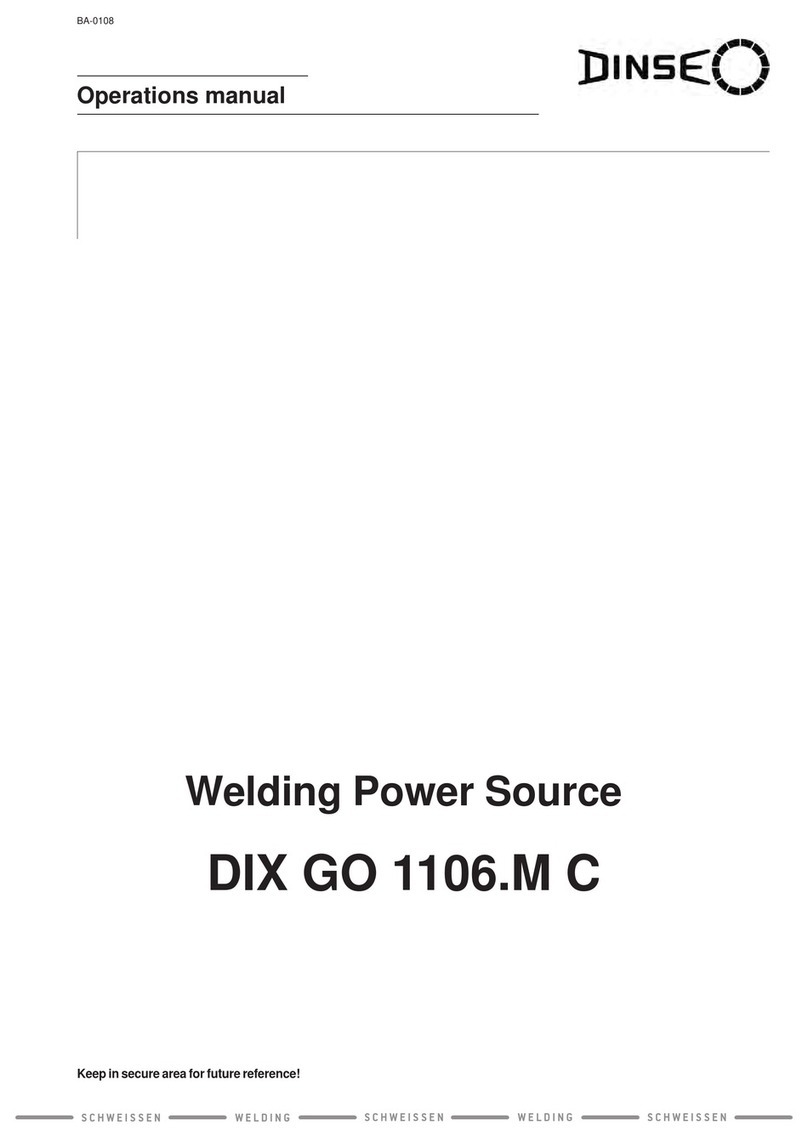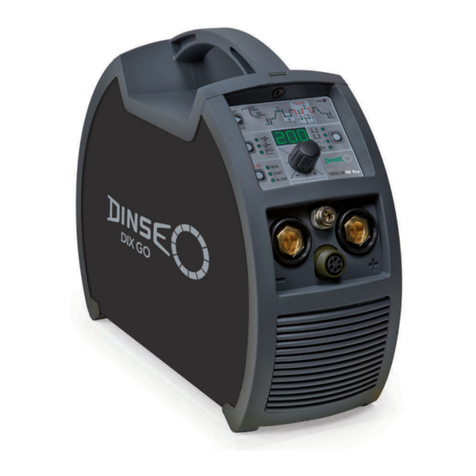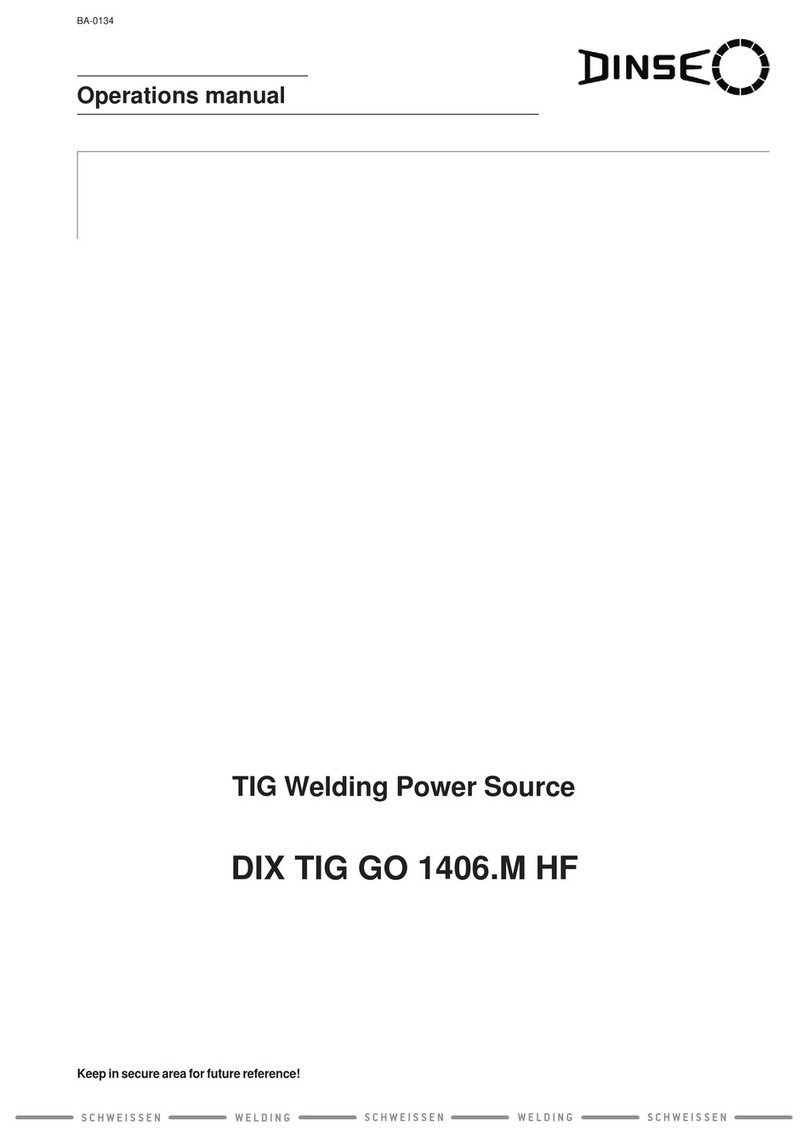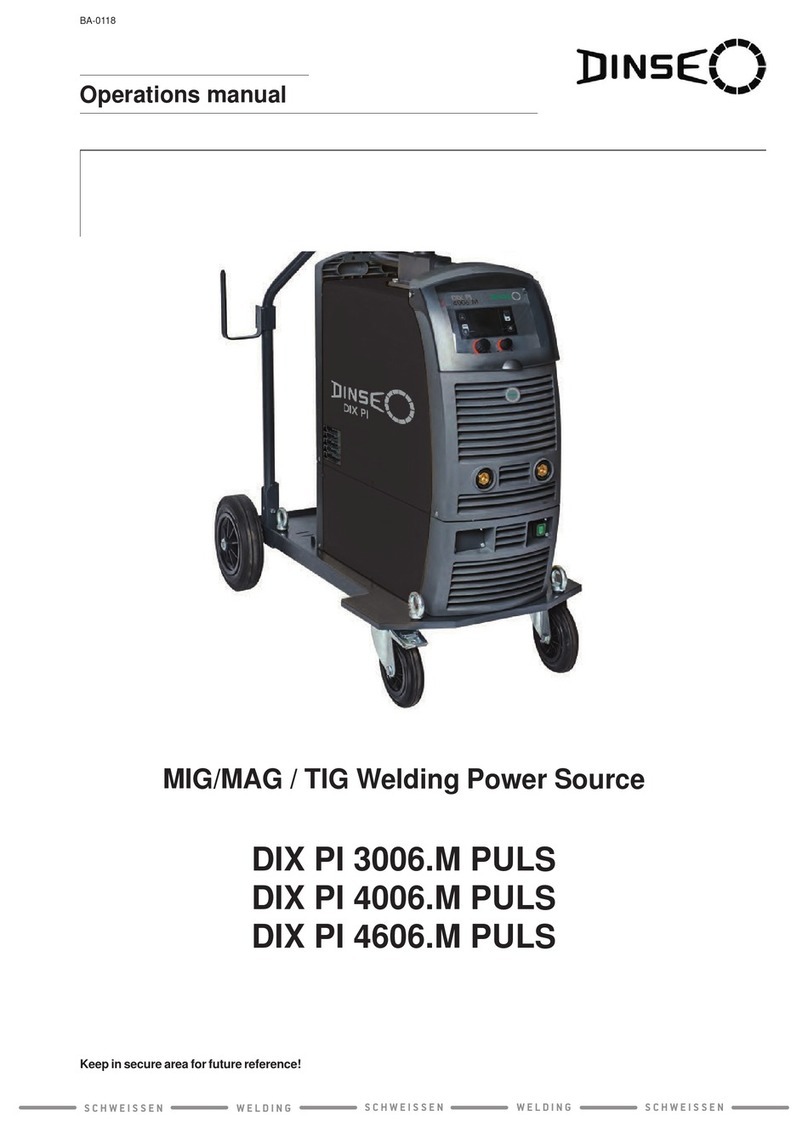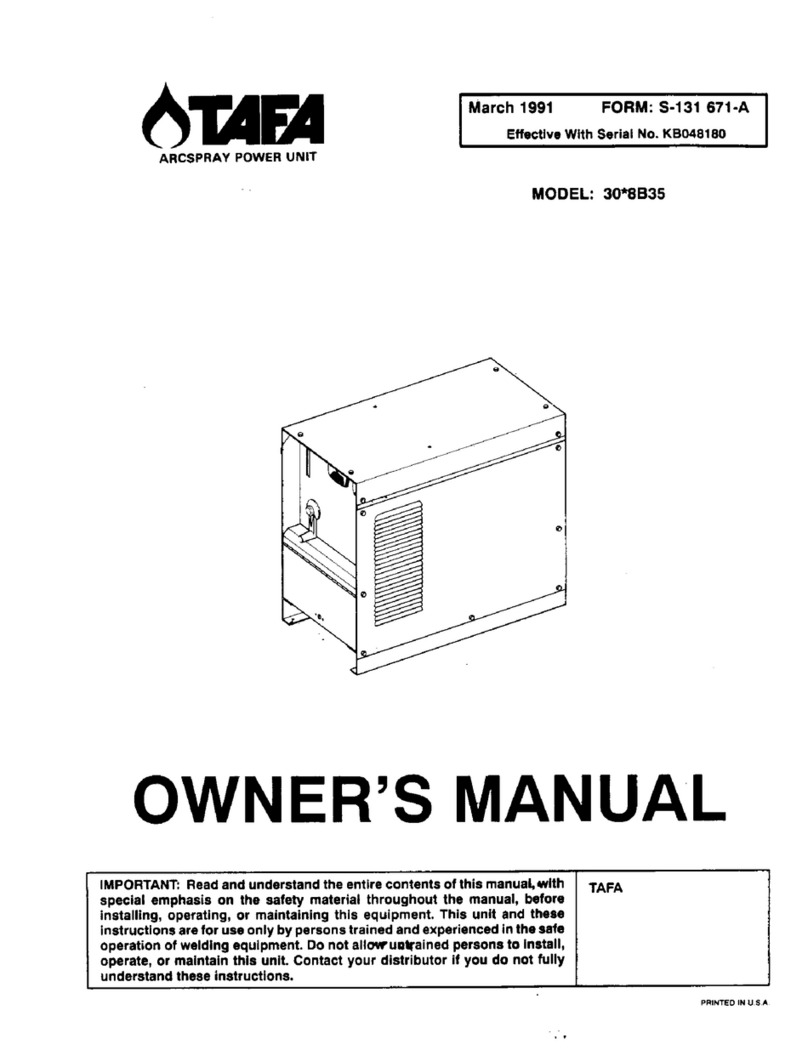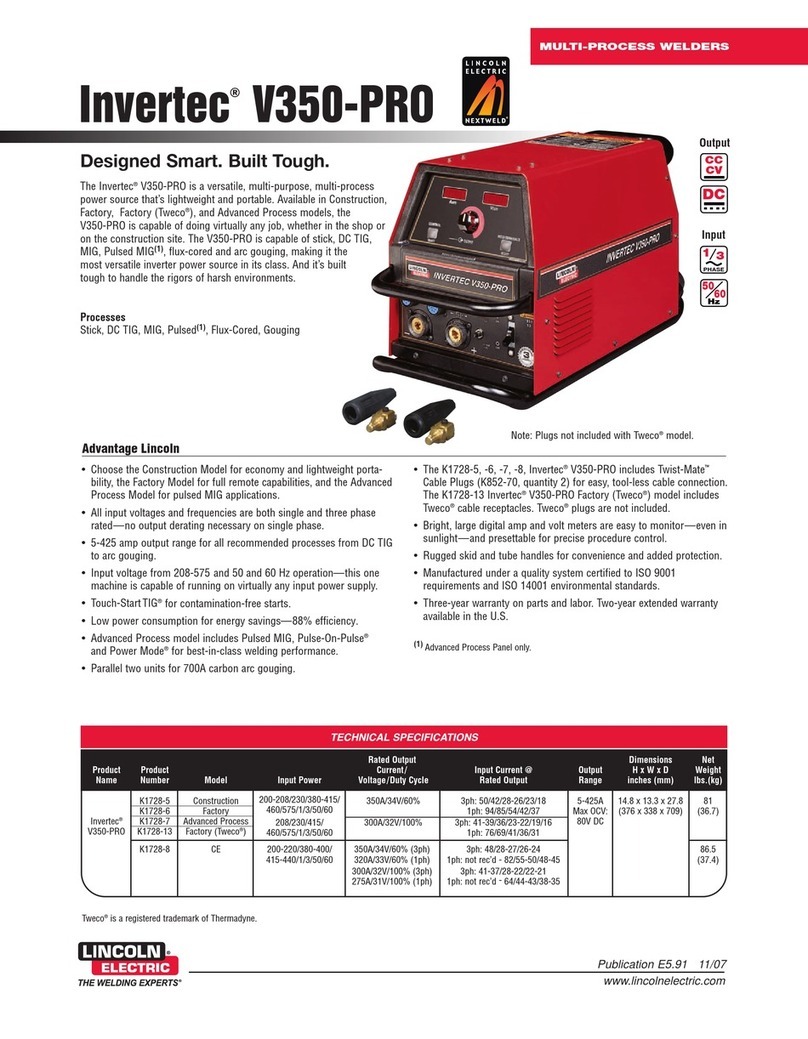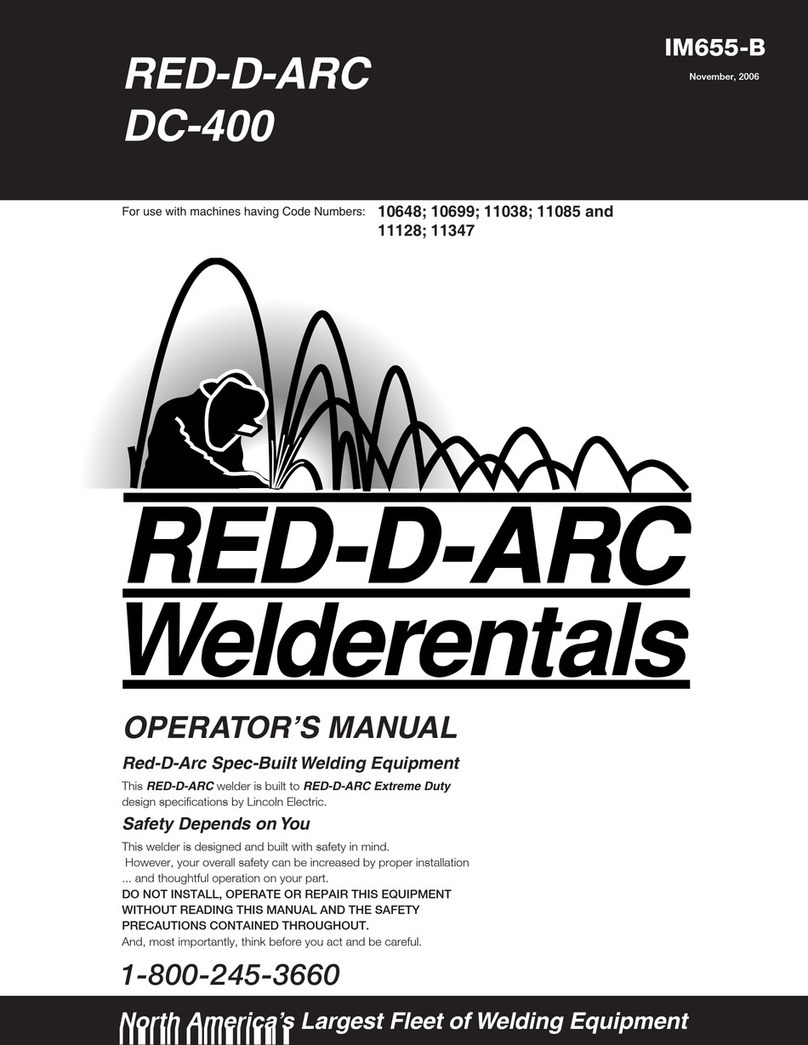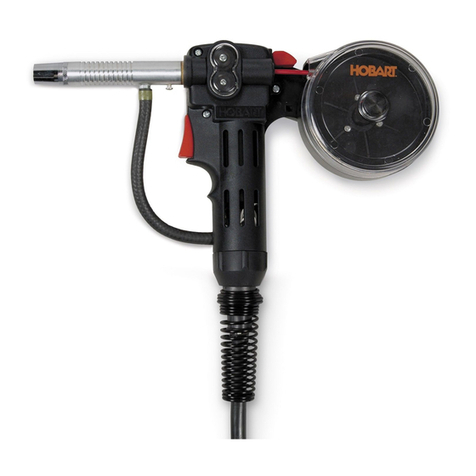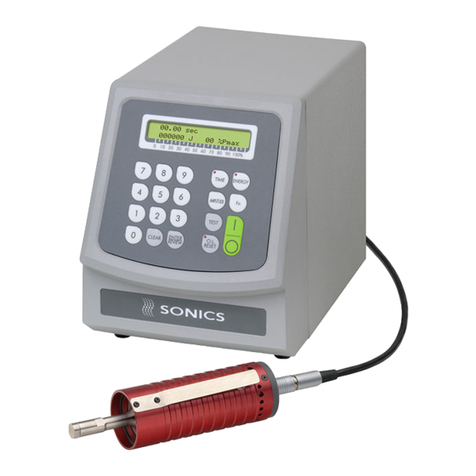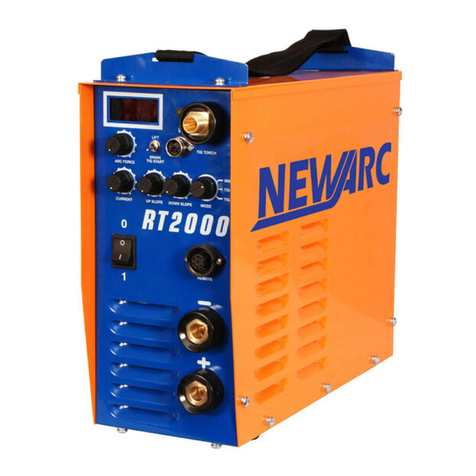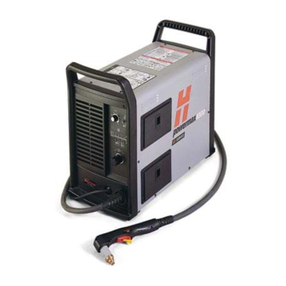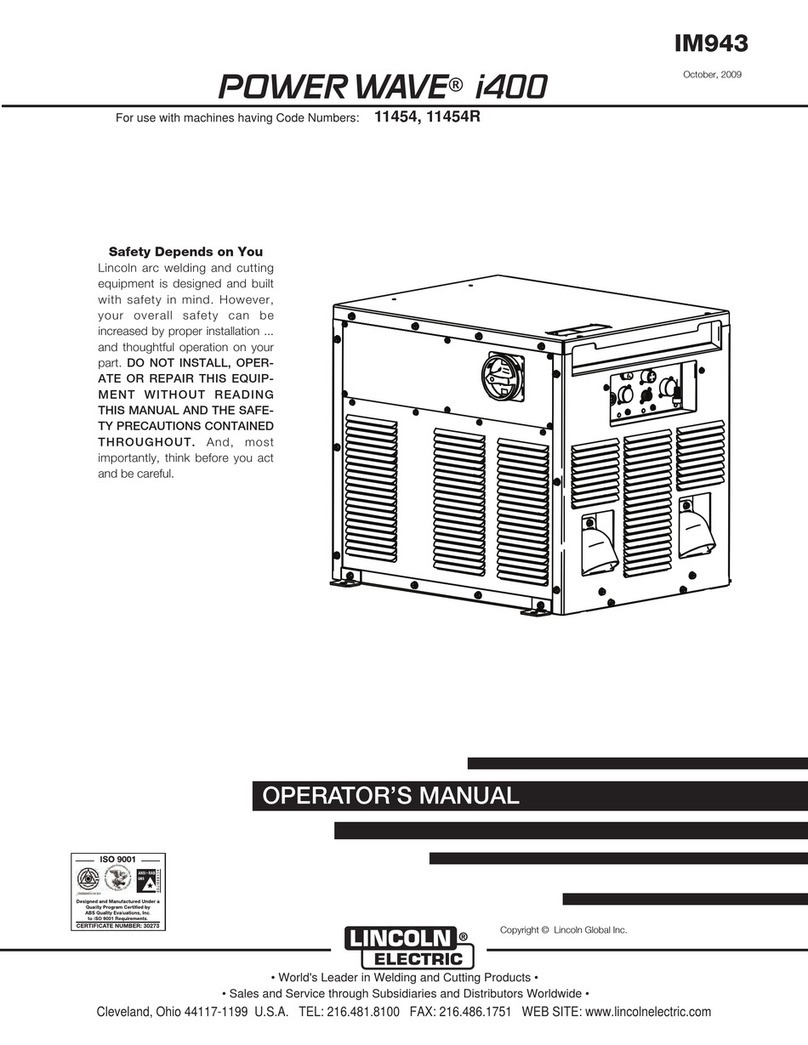
4
How to lift up the machine
The weld machine has a strong handle all in one with the frame,
used for transporting the machine manually only.
NOTE: These hoisting and transportation devices conform to Eu-
ropean standards. Do not use other hoisting and transportation
systems.
Open the packaging
The system essentially consists of:
•
DIX TIG GO 1806.M AC/DC or DIX TIG GO 2506.M AC/DC
weld unit.
• Separately:
- Welding TIG torches (optional).
- Neck strap (optional DIX TIG GO 1806.MAC/DC).
- Ground cable, complete with rapid coupling (optional).
- Coolant unit for welding torch (optional).
- trolley for transportation (optional).
- analogue / digital robot interface (optional this interface must
only be used for automatic / robotised equipments).
- Welding power source interconnection cable - robot interface
(optional - this interface must only be used for automatic / ro-
botised equipments).
Upon receiving the system:
• Remove the welding welding power source and all relevant ac-
cessories-components from their packaging.
•
Check that the weld machine is in good condition, if not report
any problems immediately to the seller-distributor.
•
Make sure all ventilation grilles are open and that no foreign bod-
ies are blocking the air circulation.
Installation
The installation site for the system must be carefully chosen in or-
der to ensure its satisfactory and safe use. The user is responsi-
ble for the installation and use of the system in accordance with
the producer’s instructions contained in this manual. Before install-
ing the system the user must take into consideration the potential
electromagnetic problems in the work area. In particular, we sug-
gest that you should avoid installing the system close to:
• Signalling, control and telephone cables.
• Radio and television transmitters and receivers.
• Computers and control and measurement instruments.
• Security and protection instruments.
Persons fitted with pace-makers, hearing aids and similar equip-
ment must consult their doctor before going near a machine in op-
eration. The environment in which the equipment is installed must
be suitable for the casing’s protection level.This system is cooled
by means of the forced circulation of air, and must therefore be
placed in such a way that the air may be easily sucked in and ex-
pelled through the apertures made in the frame.
The welding unit is characterised by the following levels:
•
Protection level IP 23 S indicates that the equipment can be used
both indoors and outdoors.
• Use class “S” means that the equipment can be used in condi-
tions subject to heightened electrical shock.
Connection to the electrical supply
Connection of the machine to the user line (electrical current)
must be performed by qualified personnel.
Before connecting the welding machine to the mains pow-
er supply, make sure that rated voltage and frequency corre-
spond to those provided by the mains power supply and that
the welding machine’s power switch is turned to “O”.
DIX TIG GO 1806.M AC/DC • Single-phase power supply
Use the welder’s own plug to connect it up to the main power sup-
ply. Proceed as follows if you have to replace the plug:
•
2 conducting wires are needed for connecting the machine to
the supply.
• The third, which is YELLOW GREEN in colour is used for mak-
ing the “GROUND” connection.
DIX TIG GO 2506.M AC/DC • Three-phase power supply
The four-pole cable supplied with the system must be used for the
connection to the mains power supply. This cable is made up of:
•
Three conductors that are used to connect the machine to the
power supply.
•
The fourth, which is YELLOW-GREEN, is used to form the
“GROUND” connection.
Connect a suitable load of normalised plug (3p+t) to the pow-
er cable and provide for an electrical socket complete with
fuses or an automatic switch. The ground terminal must be
connected to the ground conducting wire (YELLOW-GREEN)
of the supply.
Table 2 shows the capacity values that are recommended for fus-
es in the line with delays.
NOTE: Any extensions to the power cable must be of a suitable
diameter, and absolutely not of a smaller diameter than the spe-
cial cable supplied with the machine.
Instructions for use
COMMAND AND CONTROL UNITS (Fig. A)
Pos. 1 Command and control panel.
Pos. 2 Positive pole quick connection.
Pos. 3 Fast coupling TIG torch shield gas tube.
Pos. 4 TIG weld auxiliary control connector (torch button, re-
mote controlpedal, etc.).
Pos. 5 Negative pole quick connection.
Pos. 6 Power supply switch. In the “O” position the welder is
off.
Pos. 7 Mains cable.
Pos. 8 Shield gas connection.
Table 2
Model DIX TIG GO 1806.MAC/DC DIX TIG GO 2506.MAC/DC
TIG MMA TIG MMA
Input power @ I2Max kVA 6,5 7,0 9,6
Delayed fuse (I2@ 100%) A16 10
Duty cycle @ X% (40°C) A220 (30%) 180 (30%) 300 (35%) 250 (40%)
Mains cable
Length
Section m
mm23,5
2,5 4
2,5
Ground cable
Section mm225 35
